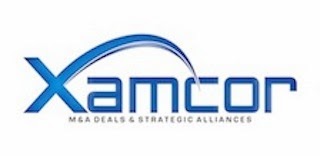Yesterday, I was stuck in the Buffalo airport awaiting transportation to a Xerox event in New York City being held today. A lot of new announcements are reportedly on tap and I got to wondering what some of these might be. Xerox, of course, recently separated its "Document Technologies" group from its "Services" group in a major split. Document Technologies, which is basically the old Xerox, carries on the Xerox brand, while Xerox Services, primarily the old ACS, which Xerox acquired in 2009, has been renamed Conduent.
The conference I am heading to is a Document Technologies conference, but, that doesn't mean services won't be represented. Xerox had a pretty healthy document outsourcing business before acquiring ACS and, from I understand, a lot of that has stayed with Xerox. This includes mailroom outsourcing - which led me to wonder if they would be announcing anything on the digital mailroom front.
In DIR, we recently ran a story on a new initiative by Ricoh called the Intelligent Delivery Services (IDS), which we billed as "More than a Digital Mailroom." The gist of IDS is that it combines scanning, analytics and consulting services to help optimize the processing of incoming mail. "“IDS is really focused on improving how people work,” said Nicole Blohm, senior product
manager-product marketing (managed services) for Ricoh USA, as quoted in the story. “It’s not just about opening mail and scanning it. We are trying to optimize mail delivery, reduce processing time, and drive better business decisions."
The first time we heard the term "digital mailroom" was back 2003 when Captiva introduced a prototype of the application at the AIIM Conference and Expo that year. We're not sure Captiva ever sold any of those systems, but they were certainly onto something as far as the concept was concerned. The term "digital mailroom" has been tossed about in our market even since.
While we saw some success in the U.S. market, particularly in federal government mailrooms in the wake of the Anthrax scares of the early 2000s, more digital mailroom implementations seemed to take place in Europe, where ISVs like Top Image Systems advertised their success in the segment. One theory was that the U.S. postal service already did quite a bit of pre-sorting for its customers, which led to more specialized mail delivery and cut down on the need for the auto-classification technology key to the digital mailroom concept.
Whatever the reason, the idea never really caught on rapidly in the U.S, market, but there are some signs that is changing. Mark Smith, director of strategic alliances at document scanner manufacturer OPEX, told us he is seeing a renewed interest in the concept. "Related to this, we are seeing a lot of interest in using scanning and capture to cut down the amount of returned mail," he told DIR. "We are working with a capture software specialist, CPT Intelligent Technologies, that is focused on this specific area."
Estimates for the total cost of creating and processing a piece of returned mail are as high as $25. According to the USPS, there were about 1.4 billion pieces of first-class and standard mail returned in 2015. That adds up to a fairly large addressable market.
"One of the things we see with returned mail is that it's fairly uniform," said Smith. "In other words, you should be able to tell what it is depending on the thickness of the envelope. For example, if you sent out a bunch of similar credit card offers, the ones coming back should all be the same thickness. So, you can tell what they are without opening them."
Once the type of returned document is recognized, automated capture can be used to extract the addressee data from the envelope. This can then be fed to an analytics and/or another type of application, which can be used to correct the problem, such as updating the address or eliminating the addressee from the database - potentially saving large amounts of money down the road by preventing future returned mail.
This is the type of ROI that the digital mailroom always needed. "We are starting feel like digital mailroom as a concept is having a resurgence," said Smith. "It has come up in the past, but I don't think it was ready for prime time. People had concerns like they didn't want want the CEO's mail opened in the mailoom. (Modern solutions like IDS have an answer for that.) We are starting to see companies now asking for digital mailroom solutions and will have a marketing message around that at the upcoming National Postal Forum, along with a demo of the concept."
Not sure if Xerox is going to announce anything like that at today's event, but it will be interesting to see how widespread the digital mailroom concept is growing.
The conference I am heading to is a Document Technologies conference, but, that doesn't mean services won't be represented. Xerox had a pretty healthy document outsourcing business before acquiring ACS and, from I understand, a lot of that has stayed with Xerox. This includes mailroom outsourcing - which led me to wonder if they would be announcing anything on the digital mailroom front.
In DIR, we recently ran a story on a new initiative by Ricoh called the Intelligent Delivery Services (IDS), which we billed as "More than a Digital Mailroom." The gist of IDS is that it combines scanning, analytics and consulting services to help optimize the processing of incoming mail. "“IDS is really focused on improving how people work,” said Nicole Blohm, senior product
manager-product marketing (managed services) for Ricoh USA, as quoted in the story. “It’s not just about opening mail and scanning it. We are trying to optimize mail delivery, reduce processing time, and drive better business decisions."
The first time we heard the term "digital mailroom" was back 2003 when Captiva introduced a prototype of the application at the AIIM Conference and Expo that year. We're not sure Captiva ever sold any of those systems, but they were certainly onto something as far as the concept was concerned. The term "digital mailroom" has been tossed about in our market even since.
While we saw some success in the U.S. market, particularly in federal government mailrooms in the wake of the Anthrax scares of the early 2000s, more digital mailroom implementations seemed to take place in Europe, where ISVs like Top Image Systems advertised their success in the segment. One theory was that the U.S. postal service already did quite a bit of pre-sorting for its customers, which led to more specialized mail delivery and cut down on the need for the auto-classification technology key to the digital mailroom concept.
Whatever the reason, the idea never really caught on rapidly in the U.S, market, but there are some signs that is changing. Mark Smith, director of strategic alliances at document scanner manufacturer OPEX, told us he is seeing a renewed interest in the concept. "Related to this, we are seeing a lot of interest in using scanning and capture to cut down the amount of returned mail," he told DIR. "We are working with a capture software specialist, CPT Intelligent Technologies, that is focused on this specific area."
Estimates for the total cost of creating and processing a piece of returned mail are as high as $25. According to the USPS, there were about 1.4 billion pieces of first-class and standard mail returned in 2015. That adds up to a fairly large addressable market.
"One of the things we see with returned mail is that it's fairly uniform," said Smith. "In other words, you should be able to tell what it is depending on the thickness of the envelope. For example, if you sent out a bunch of similar credit card offers, the ones coming back should all be the same thickness. So, you can tell what they are without opening them."
Once the type of returned document is recognized, automated capture can be used to extract the addressee data from the envelope. This can then be fed to an analytics and/or another type of application, which can be used to correct the problem, such as updating the address or eliminating the addressee from the database - potentially saving large amounts of money down the road by preventing future returned mail.
This is the type of ROI that the digital mailroom always needed. "We are starting feel like digital mailroom as a concept is having a resurgence," said Smith. "It has come up in the past, but I don't think it was ready for prime time. People had concerns like they didn't want want the CEO's mail opened in the mailoom. (Modern solutions like IDS have an answer for that.) We are starting to see companies now asking for digital mailroom solutions and will have a marketing message around that at the upcoming National Postal Forum, along with a demo of the concept."
Not sure if Xerox is going to announce anything like that at today's event, but it will be interesting to see how widespread the digital mailroom concept is growing.



